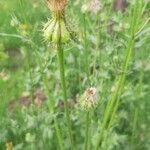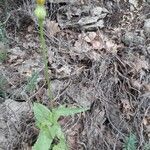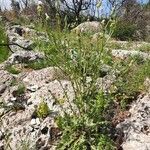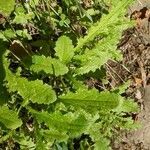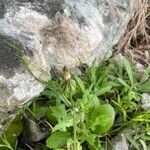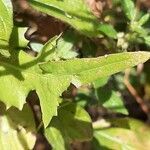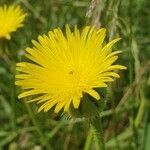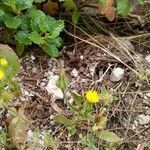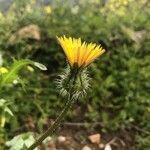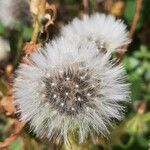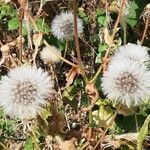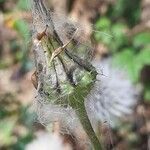Annual or biennial herb, up to 1.2 m high, stems hollow, with milky latex. Leaves rosulate or alternate along branched stems, entire or lyrate-pinnatifid, lobes coarsely and irregularly toothed, lower leaves petiolate, upper sessile, base broad, stem clasping, decreasing in size upwards, setose. Capitula ligulate, 1-3 corymbosely arranged, terminal at ends of long peduncles; involucral bracts in 1 row, connate at base, elliptic-lanceolate, with long setose hairs. Florets pale yellow. Flowering time Oct.-Dec. Pappus of plumose, basally widened bristles. Cypselae linear-oblong, subterete, usually curved, ribbed, beaked, beak basally swollen into bulbous, hollow part crowning the flattened, embryo-containing part of cypsela.
A low herb which keeps growing from year to year. It grows 60 cm tall. The leaves at the base are divided into lobes along the stalk. The lobes point backwards. The leaves on the stem are oval or sword shaped. They clasp the stem and the upper leaves are opposite. The flower bracts are oval or sword shaped and often have a dark violet edge. They have long points and bristly hairs. The flower heads are pale yellow. The achenes are 11-15 mm long.
